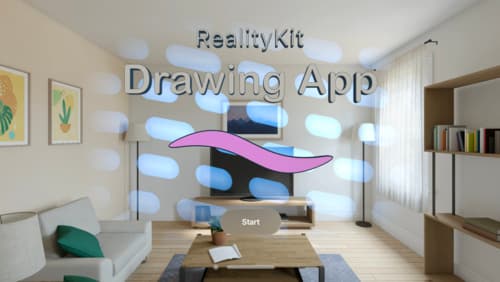What's the difference between ARKit and RoomKit?
Asked on 2024-10-11
1 search
ARKit and RoomKit are both frameworks used for creating spatial computing experiences, but they serve different purposes and functionalities.
ARKit:
- ARKit is primarily focused on augmented reality (AR) experiences. It provides tools for scene understanding, world tracking, and hand tracking, among other features. ARKit allows developers to place virtual content in the real world by detecting surfaces and using anchors to represent positions and orientations in three-dimensional space. It includes features like room tracking, which can identify room boundaries and transitions between rooms, allowing for customized experiences based on the user's location. ARKit is used across various Apple platforms, including visionOS, to enhance spatial computing experiences.
RoomKit:
- RoomKit, on the other hand, is not explicitly mentioned in the provided context. However, based on typical usage, RoomKit is often associated with video conferencing and collaboration tools, particularly in the context of Apple's hardware like the Apple TV and HomePod. It is used to enhance video conferencing experiences by integrating with room systems and providing features like camera control and audio management.
In summary, ARKit is focused on augmented reality and spatial computing, providing tools for creating immersive AR experiences, while RoomKit is generally associated with enhancing video conferencing and collaboration in room settings.

What’s new in USD and MaterialX
Explore updates to Universal Scene Description and MaterialX support on Apple platforms. Discover how these technologies provide a foundation for 3D content creation and delivery, and learn how they can help streamline your workflows for creating great spatial experiences. Learn about USD and MaterialX support in RealityKit and Storm, advancements in our system-provided tooling, and more.

Build a spatial drawing app with RealityKit
Harness the power of RealityKit through the process of building a spatial drawing app. As you create an eye-catching spatial experience that integrates RealityKit with ARKit and SwiftUI, you’ll explore how resources work in RealityKit and how to use features like low-level mesh and texture APIs to achieve fast updates of the users’ brush strokes.

Create enhanced spatial computing experiences with ARKit
Learn how to create captivating immersive experiences with ARKit’s latest features. Explore ways to use room tracking and object tracking to further engage with your surroundings. We’ll also share how your app can react to changes in your environment’s lighting on this platform. Discover improvements in hand tracking and plane detection which can make your spatial experiences more intuitive.
